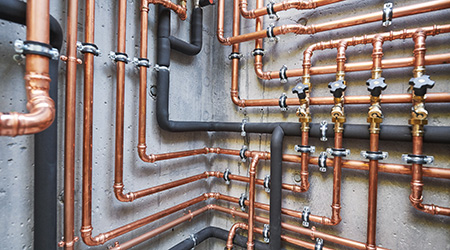Regular maintenance is essential for any institutional or commercial facility, but when it comes to hospitals and other healthcare facilities, it should be pushed to the forefront. By doing so, facility managers can better prevent the spread of bacteria like Legionella and other viruses.
Routine maintenance allows for cleaner and healthier environments, ensuring the proper care of residents and patients alike. Healthcare Facilities Today looks to see how often hospitals and other healthcare facilities should test for Legionella and what they should do to prevent the bacteria in its plumbing systems.
How often should I test for Legionella? What ongoing maintenance can I do to prevent biofilm and Legionella growth in my plumbing?
ANSI/ASHRAE Standard 188-2018, Legionellosis: Risk Management for Building Water Systems requires each building to be surveyed to determine if the building contains any devices or factors that could increase risk for legionellosis. ASHRAE 188 requires this survey for compliance to be conducted at least annually and any time renovations, additions, or modifications are made to the building. For healthcare facilities, which must comply with the requirements of the Centers for Medicare and Medicaid Services (CMS), each facility is also required to conduct a facility risk assessment to determine the potential for Legionella to grow and spread in the building water system. Only through this water management plan and risk assessment can facilities establish a thorough, ongoing operating rhythm to manage Legionella that would be unique to the facility.
— Cem Candir, CEO of Chemstar WATER
The frequency of the tests is linked to the quality of the maintenance. This frequency decreases when negative results are found. In some European countries where reporting to the local sanitary authorities has been mandatory since 2000, we began with monthly tests, then quarterly, each semester and finally yearly when the results are always negative. In case of contamination, all critical points need to be tested at least each week for following the evolution due to the treatment.
Maintaining a good temperature — less than 20 degrees Celsius for cold water, greater than 55 degrees Celsius hot water — is very important. In case of contamination, a shock disinfection using chlorine or temperature is necessary but not repeated because it can be damaging for the pipes. Monochloramine might help in preventing the reformation of biofilm. Point-of-use filters are necessary for securing the faucets.
— Professor Philippe Hartemann on behalf of AquaTools
If my building has been empty for months, what steps do I need to take to prevent Legionella in my plumbing system before welcoming back occupants?
Flushing and disinfection will most likely be needed in accordance with specifications and requirements of American Water Works Association (AWWA) C651/652 or in compliance with applicable national, regional, and local regulations.
— Cem Candir, CEO of Chemstar WATER
This is now mandatory in the regulations of many European countries. There are two possible solutions:
- Conduct a total purge of the network, which is then left in air, reintroduction of waste, disinfection, sampling and if the results are negative, possible use for welcoming patients. It is necessary to dedicate at least one week to these operations before reopening wards.
- Use each tap at least three times a week to avoid stagnation, sampling before reintroduction of patients.
— Professor Philippe Hartemann on behalf of AquaTools

 Contaminants Under Foot: A Closer Look at Patient Room Floors
Contaminants Under Foot: A Closer Look at Patient Room Floors Power Outages Largely Driven by Extreme Weather Events
Power Outages Largely Driven by Extreme Weather Events Nemours Children's Health Opens New Moseley Foundation Institute Hospital
Nemours Children's Health Opens New Moseley Foundation Institute Hospital Code Compliance Isn't Enough for Healthcare Resilience
Code Compliance Isn't Enough for Healthcare Resilience Ribbon Cutting Marks First Phase Completion for New Montefiore Einstein Facility
Ribbon Cutting Marks First Phase Completion for New Montefiore Einstein Facility